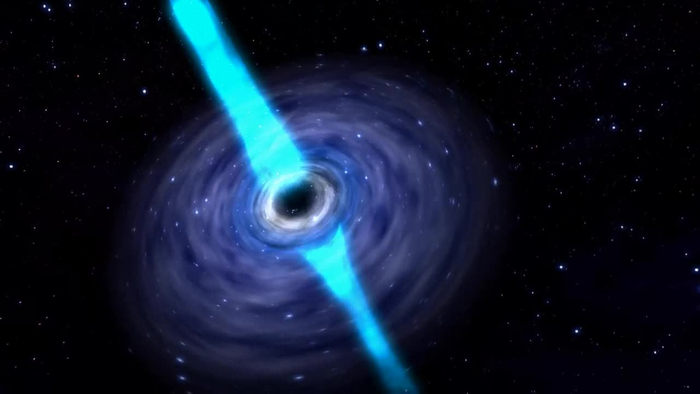In our Universe, how are chemical elements created? What is the origin of heavy elements like gold and uranium? A research team from the GSI Helmholtzzentrum für Schwerionenforschung in Darmstadt, along with collaborators from Belgium and Japan, has demonstrated that the synthesis of heavy elements is typical of certain black holes with orbiting matter accumulations, known as accretion disks, using computer simulations. The expected abundance of produced elements can be used to determine which heavy elements should be examined in future laboratories, such as the Facility for Antiproton and Ion Research (FAIR), which is now under development, in order to figure out where heavy elements come from. The findings were published in the Royal Astronomical Society’s Monthly Notices publication.
All heavy metals on Earth today were produced in astrophysical environments under harsh conditions: inside stars, stellar explosions, and neutron star collisions. The question of which of these cosmic events has the right conditions for the synthesis of the heaviest metals, such as gold or uranium, has piqued researchers’ interest. Many heavy elements can be created and expelled in these cosmic collisions, according to the dramatic first discovery of gravitational waves and electromagnetic radiation arising from a neutron star merger in 2017. The question of when and why the material is ejected, as well as if there are alternative scenarios in which heavy elements can be created, remains unanswered.
Black holes orbited by a dense and hot accretion disk are promising possibilities for heavy element synthesis. Such a system can emerge as a result of the merging of two enormous neutron stars or as a result of the collapse and subsequent explosion of a revolving star, known as a collapsar. The internal composition of such accretion disks has remained a mystery, particularly in terms of the conditions that lead to the formation of an excess of neutrons. The fast neutron-capture process, often known as the r-process, requires a large amount of neutrons to synthesize heavy elements. Neutrinos, which are nearly massless, play a crucial part in this process by allowing protons and neutrons to be converted.
“In our study, we used elaborate computer simulations to systematically investigate for the first time the conversion rates of neutrons and protons for a large number of disk configurations, and we discovered that the disks are very rich in neutrons as long as certain conditions are met,” says Dr. Oliver Just of GSI’s research division Theory. “The entire mass of the disk is the deciding factor. The more massive the disk, the more neutrons are generated from protons by the capture of electrons under the emission of neutrinos, and are accessible for the r-process synthesis of heavy elements. If the disk’s mass is too large, however, the inverse reaction becomes more important, and more neutrinos are caught by neutrons before they leave the disk. The r-process is hampered by the conversion of these neutrons back to protons.” The ideal disk mass for prolific production of heavy metals, according to the study, is around 0.01 to 0.1 solar masses. The findings show that neutron star mergers that produce accretion disks with these exact masses could be the source of a significant portion of the heavy elements. However, it is currently unknown if and how frequently such accretion disks arise in collapsar systems.
In addition to possible mass ejection processes, Dr. Andreas Bauswein’s research group is looking into the light signals produced by expelled matter, which will be utilized to infer the mass and composition of the ejected matter in future studies of colliding neutron stars. Accurate knowledge of the masses and other properties of freshly produced elements is a crucial building component for appropriately reading these light signals. “At this time, these data are insufficient. However, in the future, thanks to the next generation of accelerators, such as FAIR, it will be feasible to measure them with unparalleled precision. “In the coming years, we will be able to test neutron star mergers as the origin of the r-process elements thanks to a well-coordinated interplay of theoretical models, experiments, and astronomical observations,” Bauswein says.


